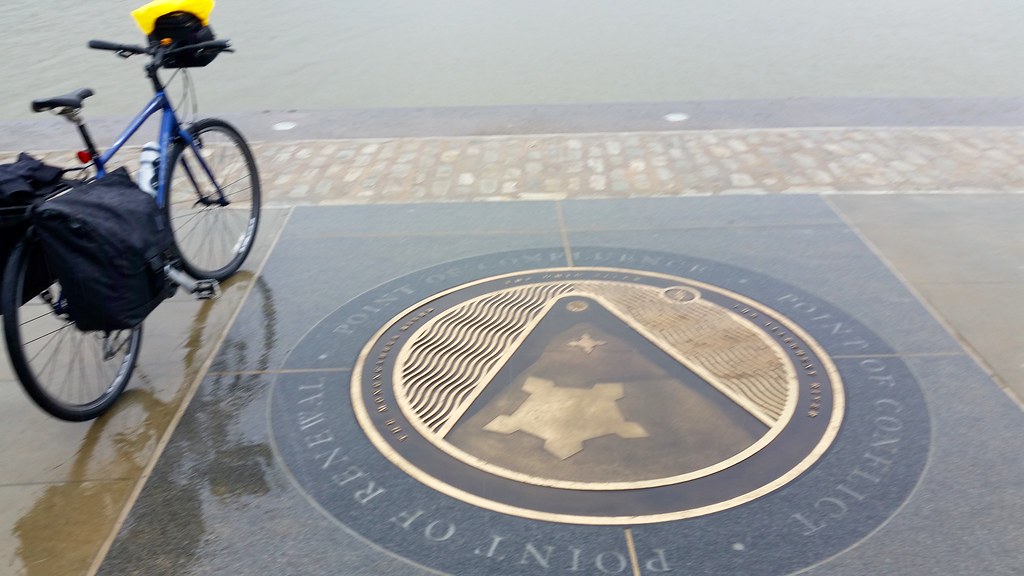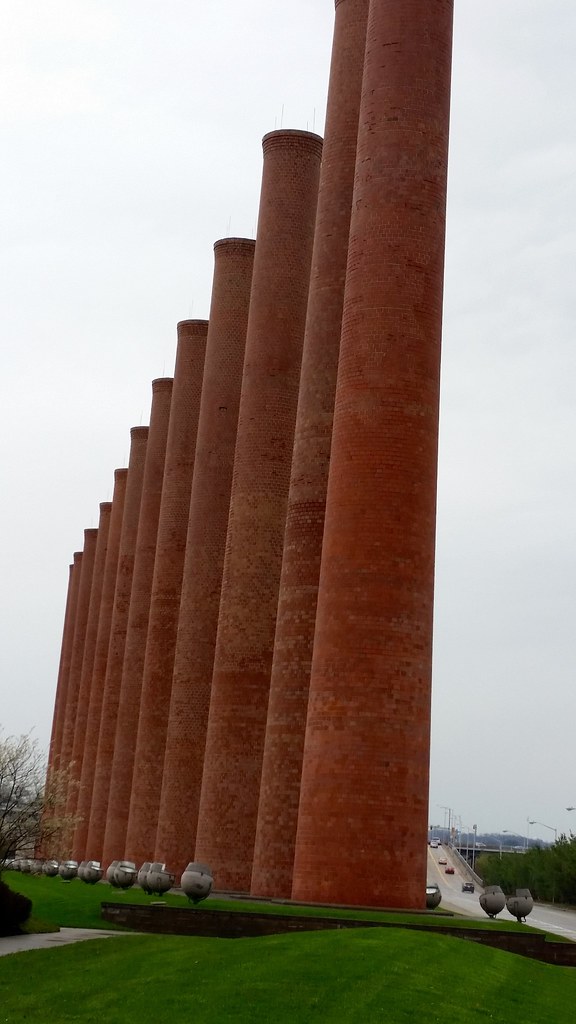I fretted about my upcoming bicycle trek along the Great Allegheny Passage trail. My attitude got stuck somewhere between nervousness and fear. I’d never attempted anything like it before, a 150 mile (240 kilometre) rails-to-trails ride between Pittsburgh, Pennsylvania and Cumberland, Maryland.
Confronting My Fears
Every time I conquered a fear I created a new one to replace it. I wasn’t “experienced enough”. So I rode all through the winter in the cold and the wind getting into shape. I wasn’t used to extra baggage. So I loaded my panniers with 20 pounds (9 kilograms) of dead weight and rode around like that for several weeks. I didn’t have the right equipment. So I had the bike overhauled, packed for every roadside repair imaginable and scoured the Intertubes for suggestions from riders who’d finished the trail successfully. It might rain a lot in early Spring. So I packed waterproof everything.
I even threw in a couple of bungee cords because — well why not — bungee cords might be useful. How did I ever get to this? A younger version of me with some friends took a 28-day roadtrip with barely a care. We left town with a AAA road atlas and only a vague idea of wanting to visit national parks. Now much older and supposedly more experienced, I was afraid I might get wet.
Ready to Go
Eventually I eliminated every rational fear. I even eliminated most irrational fears with the possible exception of attack by hillbilly meth addicts hiding along the trail in the bushes. Roving feral methamphetamine gangs were one tick above sassquatch sightings on the probability scale so I knew I’d finally arrived at the proper mental balance. I was ready. Besides, we were spending four days on the trail, an easy pace that one website described as a classic for “recreational cyclists with some experience.” That seemed to fit my demographic.
So we parked in Cumberland, Maryland. Then we hitched a shuttle ride along with our equipment to Pittsburgh through a local bicycle shop. We would need to finish the trail if we ever wanted to see our cars again and return home. That burned the bridge behind us at least figuratively.
Wheels Up

Mile 150 began in Pittsburgh. We planned to ride all the way back down to Mile 0 in Cumberland. The shuttle dropped us off at Point State Park at the joining of the city’s famed Three Rivers, where the Monongahela and Allegheny formed the Ohio (map).
I wished we’d been able to spend a little more time exploring the history at the park. It’s the place where Fort Pitt and Fort Duquesne stood at the river confluence during the French and Indian War (1754-1763). However it was already approaching 2:00 pm and we needed to get moving even though it was a light ride. Even so, that still meant 35 miles (56 km) without a ton of daylight left, but thankfully on relatively flat terrain.
We posed for the obligatory photos at the fountain in a cold, steady rain. We were all thoroughly waterproofed, warm and ready to roll so the weather didn’t bother us. The route followed city streets for a about a mile. Then we turned onto a dedicated path that would last for the remainder of the trip.
Trains

The GAP Trail followed decommissioned railroad rights-of-way primarily along riverbeds. First it ran along the Monongahela as we began the adventure and later the Youghiogheny and Casselman Rivers. Then each river grew progressively smaller as we pushed farther back into the watershed.
Trains became our constant companions for the entire route. Some lines had been decommissioned and turned into trails. Meanwhile, others continued to haul coal from the mountains in an unending stream. All day, all night, along every mile of pathway and in every sleepy hamlet the train whistles and the clackety-clack burst into waking hours and even seeped into my dreams. I saw the first train just outside of Pittsburgh (map) and then came hundreds more.
Steel

The trail leaving Pittsburgh displayed an unusual mix of suburban sprawl and post-apocalyptic ruin. It also reminded me of why the local football team became the Pittsburgh Steelers. The steep decline of the Rust Belt loomed everywhere though, in remnants large and small. Entire factories of broken windows stood abandoned along the banks of the Monongahela. Concrete blocks and iron trusses poked through the earth in unexpected places, crumbling, rusting, decaying.
Every once in a while an actual working mill continued to belch pillows of steam over the valley, an anachronism clawing its way into the 21st Century. Perhaps some might find this industrial backdrop a bit grim for riding. It rather fascinated me. I imagined the prosperity that old robber barons brought to the area only to see a way of life collapse decades later. The towns emptied and scattered their residents as the economic winds shifted to other parts of the world.
Not everything I saw reflected a tale of decline. Modern suburbs grew into many of the vacant spaces once filled by factories. We peddled past an odd array of well-preserved smokestacks (map) in front of a shopping center called The Waterfront. Those were remnants of the Homestead Steel Works, once the world’s largest steel-producing plant.
“The poles are the 12 towering smokestacks that used to vent heat from red-hot steel ingots waiting to be reshaped in the 45-inch slab mill. They now stand like lonely sentinels at the edge of the Loews Theater parking lot.”
Homestead Steel Works dated to the 1880’s, once owned by industrialist Andrew Carnegie. Later he sold it to U.S. Steel where it became the company’s flagship factory. It was also the site of the infamous Homestead Strike of 1892 that lasted for several months and brought significant violence and loss of life.
The Works closed in 1986. Nearly thirty years later I rode across a place where rivers of molten metal once flowed.
Scars Upon the Landscape

We began to leave city behind and pushed past McKeesport. Along the way we switched from the bank of the Monongahela River to the Youghiogheny. The trail’s paved surface turned to gravel and would remain that way for the remainder of the ride. City gave way to suburb and finally to countryside as the miles slipped away. Next came smaller towns like Boston and Sutersville and historic sites such as the old Dravo Cemetery.
Nature reclaimed many of the abandoned industrial sites although a toxic legacy remained. A red waterfall (map) hid a dark secret. The rich color came from iron. The acidity killed aquatic life and poisoned waters. Toxins seeped from abandoned mines, an environmentally harmful condition called Acid Mine Drainage (AMD). The waterfall reminded me that even something ugly could appear somewhat beautiful on its surface.
We arrived in West Newton for the night, wet and layered with ashen grime from the crushed limestone of the trail. Then we hosed-off our bikes and congratulated ourselves on a successful first day.
The Great Allegheny Passage articles:

Leave a Reply